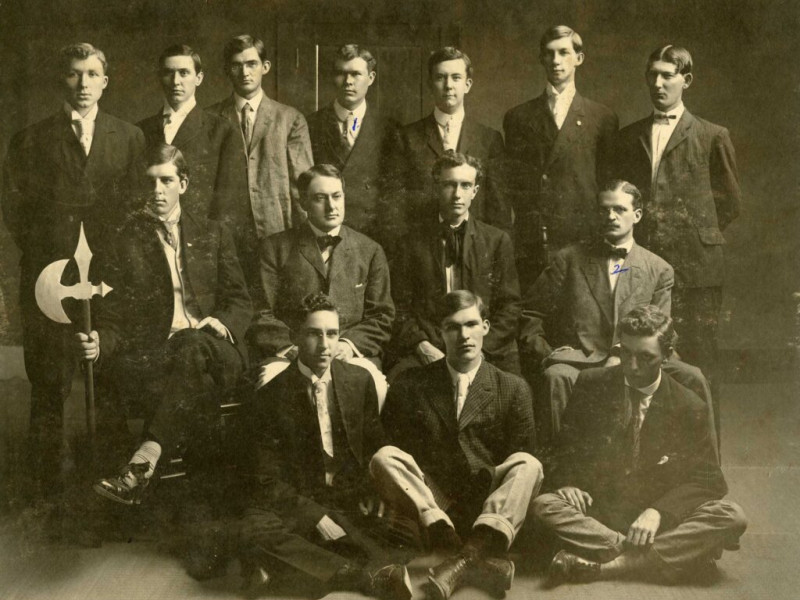





Written By Nik Koulogeorge

Written By
Published
Jul. 16, 2020
Updated
Nov. 21, 2021
The single common value of every fraternity is "fraternity." It's in the name, governing documents, and ritual of almost every Greek-letter friend club. As organizations which "facilitate fraternity" we fill a unique niche on college campuses. Relationships are a side effect of membership in most student organizations. They are the priority in fraternities.
How fraternities operate changes with the decades, so some organizational components occasionally outlast their practical or intentional purpose. Due in part to the centralization of fraternity leadership, "family trees" are one such component. Many chapters employ them (along with a "big"/"little" or "father"/"son" dynamic) but few have a practical use for family trees.
This article explores ways to integrate family trees into how your chapter operates. If fostering relationships is the priority of a fraternity organization, then a "family tree" should play a pivotal role in that effort.
There is no doubt about it, fraternities need to formalize the role of "Big Brothers" or "Fathers" (henceforth "Bigs") as new member educators. Chapters should use this as a way to determine which members should be big brothers. As a family affair, it can be the responsibility of any family tree to ensure that their newest additions understand the responsibilities of membership.
There are usually some "family" moments in most joining processes, but they seem to be ceremonial. Using family lines as natural study groups or to help newer members take part in chapter meetings makes sense. It also involves more people in the member orientation process. That's good; re-orientation is not a bad thing.
Instead of a "Pledge Class Project," which is probably against the rules, each family can have an annual project. The project can incorporate all members of the family tree as an annual requirement of membership. (Wait. Is that hazing? No.)
Let's say the members of a "family" or multiple, smaller "families" want to put together an event. Whether just for the chapter members or open to the public, family trees can replace static committees. As an example, a member of each family tree can manage and track the Health & Wellness performance of each family member. In this way, the committees of a fraternity chapter are organically tied to the number of members and the interests of those members.
Alternatively, family lines may serve as permanent committees. For example, the members of one family tree specialize in service programming. They become known as the family to recruit and cultivate exceptional servant leaders with ties to other service organizations on campus. This helps make sense of the age-old idea that "everyone has a role in recruitment. Members of a family learn to seek out potential members who would be interested in the types of events they organize. If they fail, then they either need to change the types of events they organize for the chapter or their family line dies out.
This contributes to the greater mix of the chapter but also allows members to specialize their talents. All members still bond at meetings, ceremonies, and social events. Fraternity chapters do many things. By emphasizing the role of family trees in events or programs, a chapter can better manage its niche and recruit potential members within that niche.
Hogwarts houses are the ultimate fraternity fantasy. Some of the elements which make the four Hogwarts houses exciting (each has its own colors, symbols, rituals, dormitory, etc.) can be integrated into the chapter experience. So, while you may not have magic portraits that grant access to a dormitory just for your family line, there are still ways to bring that magic into the real world.
Family trees are natural ways to split up members for competitive or group events. If a member does something well, reward his entire family line. It is a great way to encourage members to look out for one another and to support each other. It also ensures that younger members are partnered with older members, as opposed to groups organized by class year. Smaller family lines can team together as it relates to the competition or any other point mentioned in this article.
The prize does not need to be exceptional. A "House Cup" for whichever family wins made of cardboard would suffice. Add a pizza party and you'll have fraternity men jumping through hoops to improve the world. Keep a tally somewhere public and keep it simple, just for fun.
Family trees are a natural way to maintain connectivity between members after graduation. Encourage members to recruit members from their family line, or to gather life updates for newsletters or yearbooks. Organize Homecoming competitions around family lines. and feature each lineage on your name badges.
Most members share a special bond with members of their year and within their immediate circle. Family trees link existing students to graduated members in a way which "pledge year" cannot. Consider family trees in terms of alumni events, news, and donations. Recruit members for networking or professional development initiatives through family lines.
Fraternity organizations rarely provide credible guidance or resources to support and foster family units in chapters. There is a utilitarian reason to avoid "cliques" in a chapter, but that misses the central purpose of all fraternity organizations. We exist to facilitate relationships, and family trees can be a defining quality of college fraternity and sorority organizations.
How else can a family tree play a more integral or educational role in the operation of a collegiate chapter? What about networking experiences after college?
Help keep it going and growing by contributing as little as $2. (Links below will take you to a secure payment portal via Stripe)
A free way to support: Subscribe to the Fraternity Man newsletter for [very occasional] updates and giveaways.